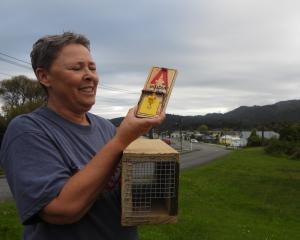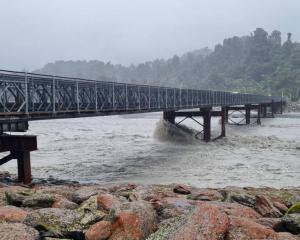
Family, friends and former workmates arrived at the mine site shortly after 10am, to be met by flickering candles at the mine portal, 19 in number, a simple reminder of the human tragedy of the events of January 19, 1967.
For many, including surviving widows and children, it was their first visit to the place where their husbands and fathers died.
People stood silently after disembarking, deep in the Nine Mile Valley, north of Rapahoe.
The tranquil setting of the site belied the upheaval and sadness of the disaster that fateful day in 1967.
There were tears and people stood in thoughtful silence as they beheld the place that changed their lives forever.
Gary Coghlan, whose father Lawrence Coghlan died in the explosion, acknowledged in te reo the most important element at the heart of that fateful day: ``the people, the people, the people''.
He also noted ``a time of healing'' the 50th commemorations offered for those affected by the tragedy.
Strongman historian Peter Ewen outlined how when ``coal was king'' Strongman was at its heart in the Grey district.
From its beginning in 1939, Strongman was ``going to be gassy'' and 11 other men had lost their lives in single incidents there, including a large explosion in 1956, aside from the 1967 tragedy.
At the time of the disaster, 150 men were working underground.
On Saturday, there was a pause as each name was read by retired Runanga miner John Sturgeon, each with a simple anecdote about the individuals who died.
Master of ceremonies, Archdeacon Robin Kingston noted the ``fortuitous slowing down'' of the gas explosion, which had saved many more lives, and spoke of those who stayed for 14 hours to bring out the first 15 bodies.
He also noted healthy and dangerous grief, the former well acknowledged in the local community through public memorials, and touched on more recent events and how the police, fire and Mines Rescue all recognised their parameters at the time.
``It was wonderful that they recognised that Mines Rescue were the ones in charge,'' Mr Kingston said.
In contrast, the police took charge at the Pike River disaster.
Speaking afterwards, Anthony O'Donnell recalled, as a 7-year-old, seeing the stricken face of one of his aunts and how he ``just knew'' his father was dead.
On Saturday, he said the 50th commemorations had underscored the ``common experience'' of the mining fraternity ``sticking together, staying together''.
Strongman 50th co-organiser Rose Green said they were rapt with how it had all come together since October.
``It's like family coming together - talking, laughing and crying.''
It had included the surprise of people connected to the tragedy, who had previously been untraceable, but who had heard about the reunion and showed up ``on the spur of the moment''.
Former coalminer and Mines Rescue volunteer Harry Bell, later New Zealand's chief inspector of mines, paid tribute to the reunion organisers.
``We had an awful lot of reminiscing, of course ... and there was a few wee tears.'' - The Greymouth Star
- by Brendon McMahon











